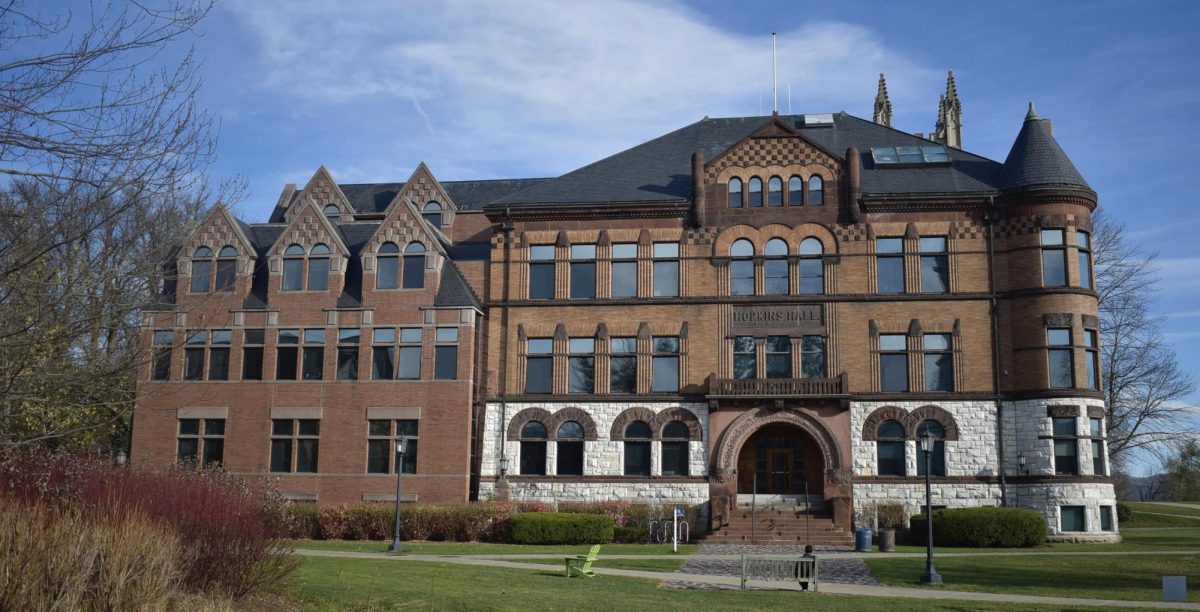The financial aid cap for Winter Study 99s, thesis projects and SPEC courses will increase from $500 to $1000 this coming Winter Study, amid other changes in the financial aid process for Winter Study.
The proposal from the Winter Study Program Committee (WSPC) was approved by the provost’s office last spring, according to WSPC members Adam Jones ’21 and Winter Study Coordinator Barb Casey.
“I am thrilled that the increased cap was approved and I hope that it allows students to dream bigger and make their Winter Study all that it can be,” Director of Financial Aid Ashley Bianchi said.
Winter Study 99 courses allow students to pursue independent, often research-based, projects for the duration of Winter Study, which can be on or off campus. Senior thesis projects, which are listed as 30s or 31s, are taken by students completing theses. The SPEC prefix, meanwhile, designates courses with topics that are outside academic department areas of study or that are being sponsored by WSPC.
The maximum amount of financial aid available to support 99 projects has been $500 since 1997, Casey said. Jones pointed out that the costs associated with transportation make it very difficult for many students to limit the costs of their off-campus projects to under $500.
“The amount hasn’t been adjusted for inflation,” he said. “It was a flat $500. Just getting off campus to go anywhere, much less somewhere interesting, costs drastically more than $500.”
Deciding how much the new cap should cover was difficult, Jones said, because the 40-50 students who do off-campus 99s range significantly in funding requirements. In the end, the provost’s office set the amount at $1000 based on costs of past 99s and SPEC projects.
“Some of the costs are widely varied: You couldn’t set one amount that would catch everyone,” he said. “We’ve seen Winter Study 99 proposals — incredibly valid and frankly quite impressive ones — where, because of where they’re going or because of the research they’re doing, these projects could cost upwards of $4000. We can’t set it that high, but I think $1000 is a good start.”
With the variability of project costs in mind, WSPC will look to adjust the cap based on how demand shifts in the future.
“Written into this proposal was a kind of byline to re-examine this amount on a regular basis,” Jones said. “In the previous model, we had a set amount that sort of fell from the sky in the ’90s, and then we just used it for 20 years.”
Jones pointed out that meal plan rebates offer a small addition to the financial aid sum for students doing off-campus projects.
“If you’re off campus, you can get your meal stipend back, which is another $380 or so,” he said. “That puts you at $1300-1400, which is a lot more reasonable.”
Provost Dukes Love said the decision to expand the cap came amid a larger push to broaden the scope of financial aid.
“Other enhancements include the Health Insurance Grant, which covers the full cost of health insurance for any aided student who does not have coverage, the Free Summer Initiative, which gives aided students the opportunity to choose one summer when no contribution from their summer earnings is required, free campus storage, and a $300 increase to students’ personal allowance,” he said.
Several fellowships allow students doing specialized 99s to attain additional funding, including the Levien Family Winter Study Journalism Fellowship, the Gaudino Fellowship and the Collin and Lili Roche 1993 Student Research Program Fellowship, which is geared toward students who will eventually write a senior thesis on the topic they investigate during Winter Study.
“One of the problems was that there was a stacking rule, which essentially meant that if you got Roche, you could not get financial aid,” Jones said. “So the problem becomes that the Roche Fellowship was really just acting as budgetary relief for the financial aid office. Roche runs out every year; there are far more qualified projects than Roche can afford to fund, and many students who don’t get funding, especially if they’re counting on some form of financial aid, simply can’t afford their projects.”
In response to that issue, money from the Roche pool, which Jones and Casey said amounts to around $50,000, will be distributed on top of financial aid.
“Now, the stacking rule is that if you’re a financial aid student, you get financial aid first, and then after financial aid, you can qualify for Roche,” Jones said. “The effect of that is that the Roche money goes much further – we can spread it out over more students because those students are also being supplemented with financial aid.”
Jones also pointed out a key difference between how fellowships and financial aid are awarded. “We can’t target all the Roche money towards students of need because it is a need blind, merit-based scholarship, as opposed to financial aid at Williams, which is need-based,” he said.
For courses other than 99s and SPECs, he continued, “Winter Study financial aid is just a continuation of your normal semester financial aid package and works in a very similar way.”
Financial aid for all Winter Study travel courses will also be awarded through a new process starting this term. Previously, funds were awarded at a rate that was directly proportional to a student’s level of financial need for the academic year, rounded up to the nearest 10 percent. Now, students receive a grant of either 50, 80 or 100 percent of the total cost of the travel course, rounding up from the students’ actual level of need. This will not affect the financial aid of standard on-campus Winter Study courses, however, which will continue to be covered by the current system.
“We used an internal indicator that we use for awarding other types of aid, such as first and last yard funds, and applied it to our winter study aid to simplify the process and allow the Winter Study staff and committee more autonomy in advising students,” Bianchi said. “We hope this change will allow more financial aid students from various income levels to take advantage of these awesome opportunities.”
Megan Siedman ’20, who will take part in SPEC 25, “Williams in Georgia,” this Winter Study, said she appreciates the College’s willingness to fund travel courses generously.
“As a person who wouldn’t otherwise be able to travel on my own, and who has never traveled in her whole life, I’m incredibly grateful for all of the largesse from the school and the alumni network,” she said. “I still can’t fathom the fact I’m actually going to get to travel and that I’ll actually be in another country in January. It’s absolutely unreal and it feels like a dream.”








